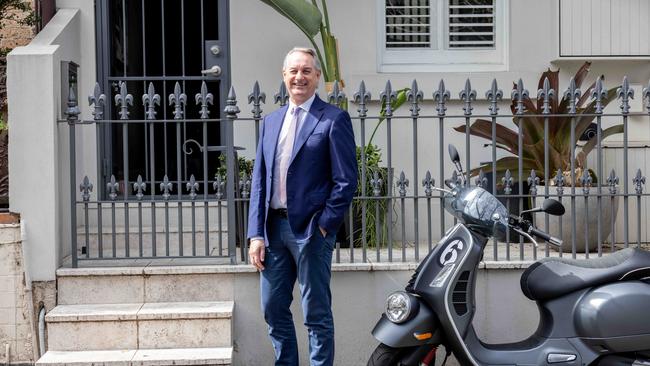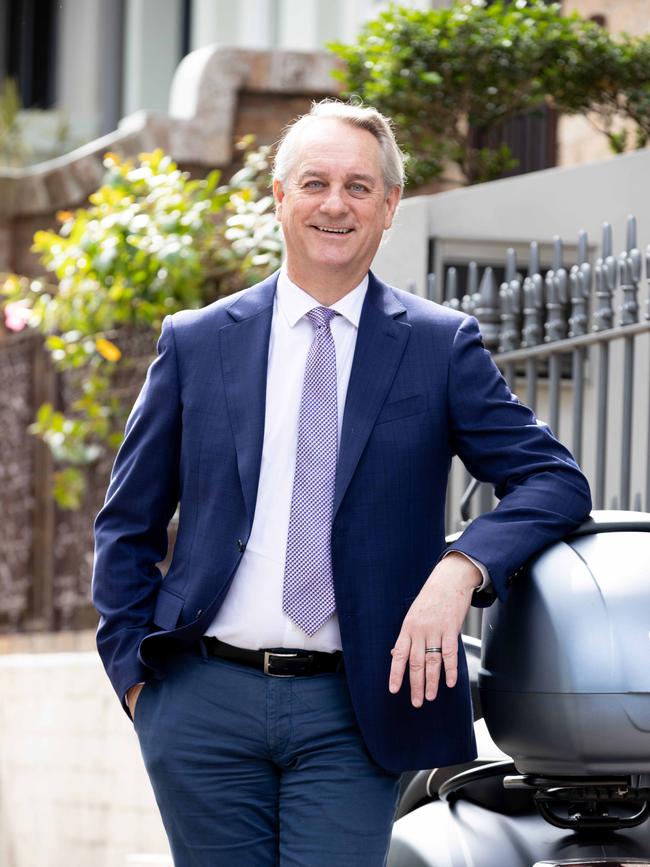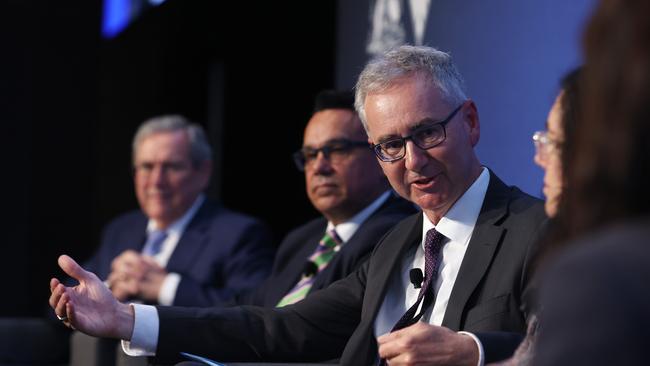Bank of Sydney CEO Melos Sulicich says strong small banks needed ‘to keep the large guys honest’
Career banker Melos Sulicich has seen it all: an uneven playing field, and smaller operators losing out to the majors. He also has a problem of his customers’ own making: too many deposits.

Business
Don't miss out on the headlines from Business. Followed categories will be added to My News.
Same problem, different bank. Bank of Sydney boss Melos Sulicich is back in charge of a regional lender and he is hoping to convince his customers to borrow more.
That’s because Bank of Sydney, once known as Laiki Bank, has more deposits than loans: $3.1bn to $2.8bn. It’s a unique problem to have given banks are typically a leveraged bet on the economy.
Mr Sulicich, who previously ran Tasmanian lender MyState, said the small banking sector still faced an uneven competitive landscape in the fight for market share against the big four. And a dynamic small banking sector is essential to keeping the big four “honest”, he claims.
Mr Sulicich is also a former boss of the discount mortgage lender Rams, and described small banks in Australia as a tough market given the regulatory burden and funding costs are not easily offset.

He said the re-elected Labor government would have to get to grips with the review of the small banking sector from the Council of Financial Regulators, due in the middle of this year.
“Hopefully whoever takes that look has a view that the operating environment is problematic and something needs to change,” Mr Sulicich said.
“The country needs a second and third tier banking system that is strong and robust and profitable, it needs that to keep the large guys honest because if you end up in a situation where you’ve got only three to four guys, that’s not good for the country.”
Despite its oligopoly, the banking sector has consolidated through mergers and acquisitions, including ANZ’s purchase of Suncorp Bank and the combination of smaller players Qudos Bank and Bank Australia.
Mr Sulicich pointed to the failure of many ‘neobanks’ to break into the market, with Xinja, Volt, Up and 86400 acquired or shut and only Judo remaining as a viable standalone.
The Bank of Sydney boss rued how regulation and rules are heaped on big and small operators alike.
“We haven’t got a team of risk people and regulatory people who can look at stuff that needs to change, it falls on half a dozen people who have to interpret all the regulations,” Mr Sulicich said.
“That stuff falls harder on smaller banks, you haven’t got the larger revenue streams to wash those extra costs against.”
The Australian Prudential Regulation Authority recently changed the way it deals with smaller banks, removing dedicated prudential supervisors, and replacing them with an inbox and supervisory panel.

Mr Sulicich said this model meant the prudential regulator, chaired by John Lonsdale, was “not as close to you as an individual business as they previously were”.
“From my point of view, I preferred the former. By being supervised you could ring your supervisor to say, ‘this is going on in my business, you need to understand it’,” he said.
Mr Sulicich pointed to the capital rules for the smaller banks, set by APRA, compared to the internally rated capital rules implemented by the majors.
“We’ve got to hold more capital,” he said. “The funding is more expensive, but the large banks get an implicit government guarantee.”
ANZ, CBA, Westpac, and NAB are all prevented from buying or merging with each other under the four pillars policy.
“There’s fewer and fewer banks, you’ve got less and less choice for customers,” Mr Sulicich said.
The head of another challenger, Qudos, told The Australian in January the mutual sector could be reduced to just 10 contenders in a decade as mergers increase. Qudos sought to merge with Bank Australia to create a $17bn lender.
Mr Sulicich said Bank of Sydney was trying to differentiate itself with its small to medium business focus. Its business bankers help it win customers, including with structuring their businesses, to ensure they are profitable and their assets protected.
Bank of Sydney has kept these credit roles in-house over the last 25 years, with Mr Sulicich describing this as a key edge in the competitive world of business banking, offering smaller operators a more personal service.
Bank of Sydney reported 17 per cent business lending growth in 2024, with its business banking team growing by 42 per cent over the period. It has a $2.8bn loan book and more than $3.1bn in deposits.
The bank’s net interest margin, measuring its profitability from savings and loans, was slashed by 52 basis points to 1.86 per cent.
Bank of Sydney operates eight branches across Sydney, Melbourne and Adelaide.
“Branches do more than have people in them, they provide psychological security to your customer base as well. We’ll continue to have branches,” he said.
“We don’t see a medium term future without some branches and some locations.”
The career banker says Bank of Sydney is playing in a different part of the market than his former lender, catering to small and medium enterprises, rather than MyState’s retail-focused loan book.
It is heavily investing in a technology transformation, mirroring the push across the broader banking sector with both majors and regionals looking to replace their aging platforms.
This will see Bank of Sydney replace its core banking platform, moving from Fiserv to a cloud-based Infosys product.
More Coverage
Originally published as Bank of Sydney CEO Melos Sulicich says strong small banks needed ‘to keep the large guys honest’





